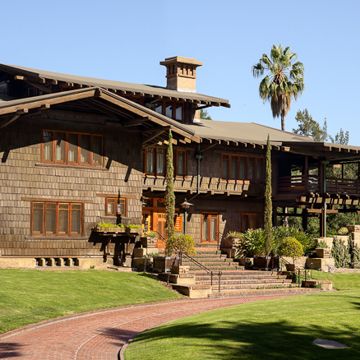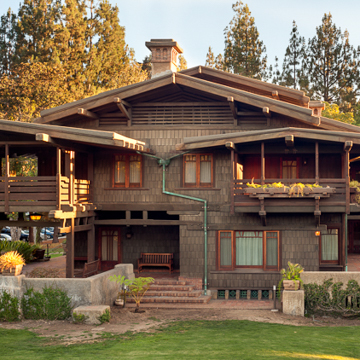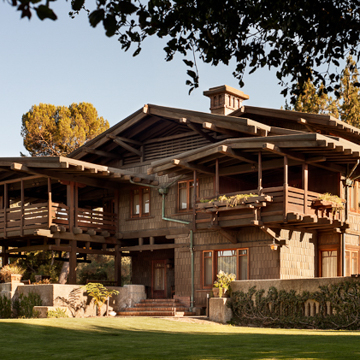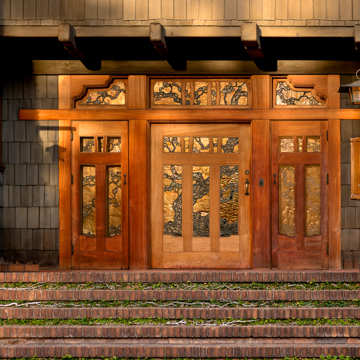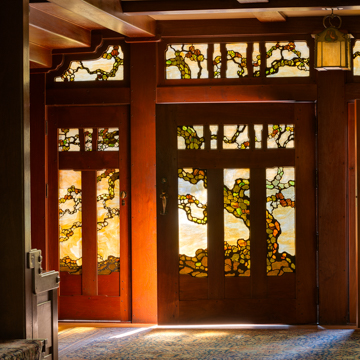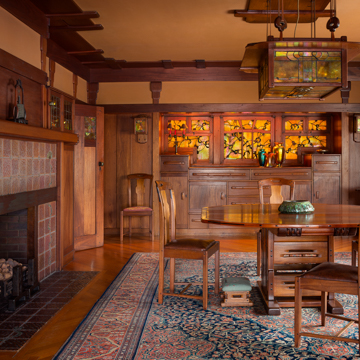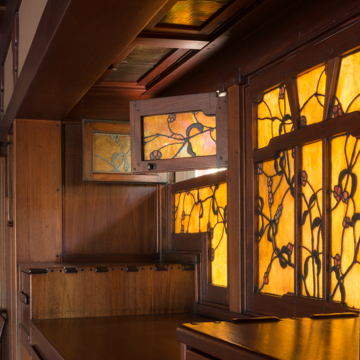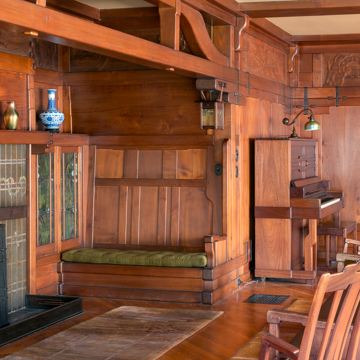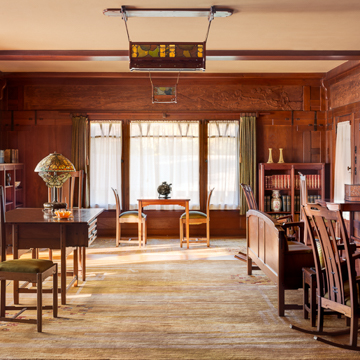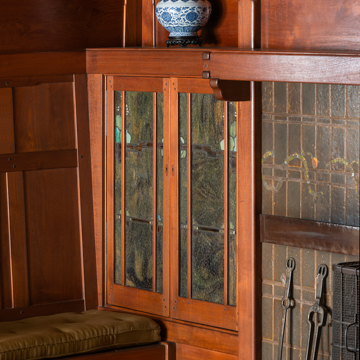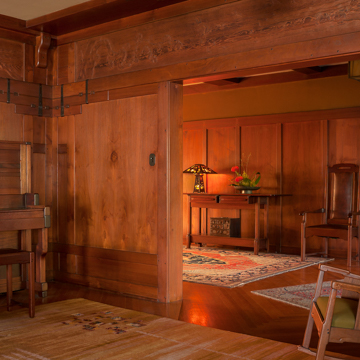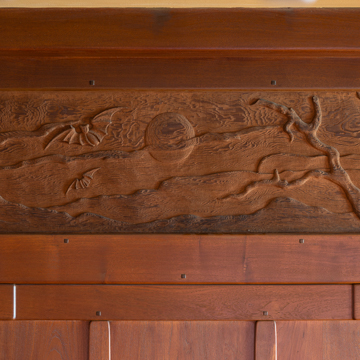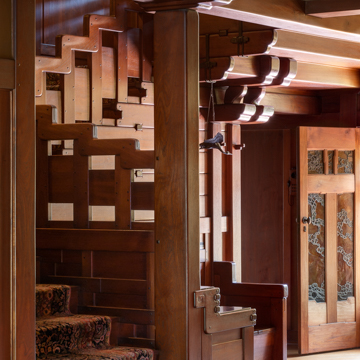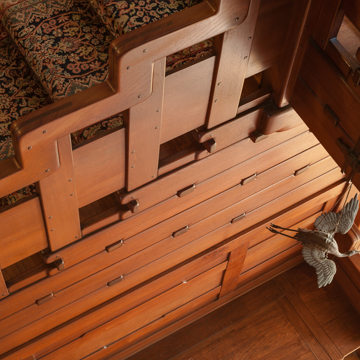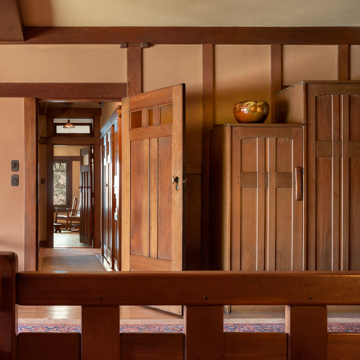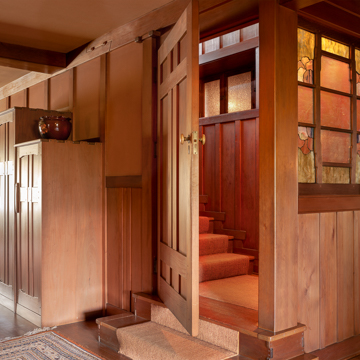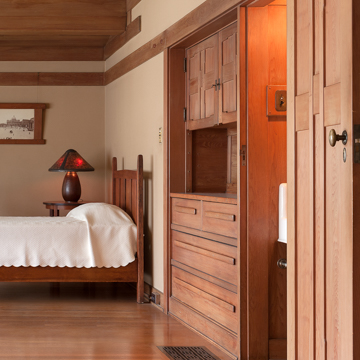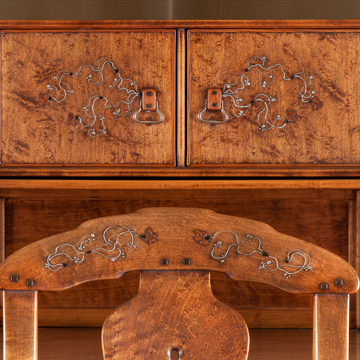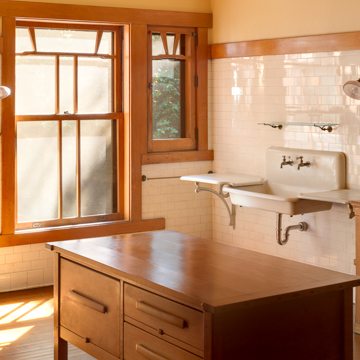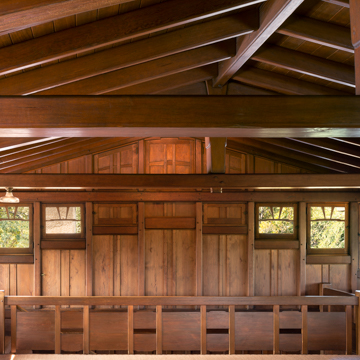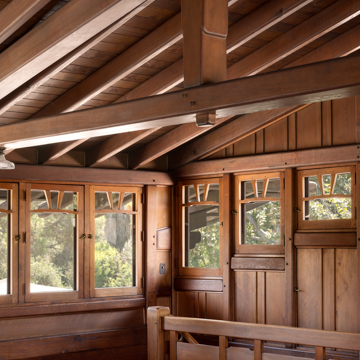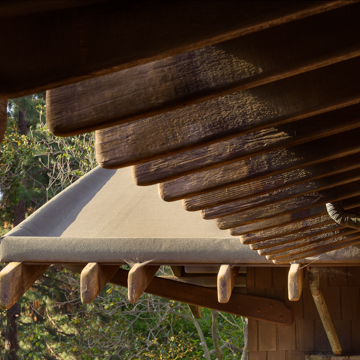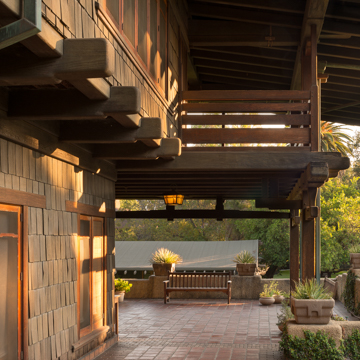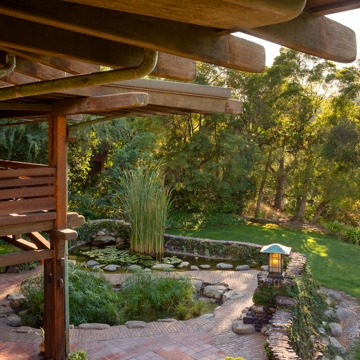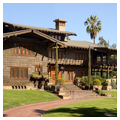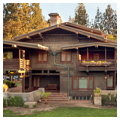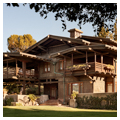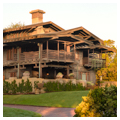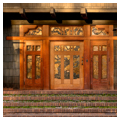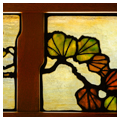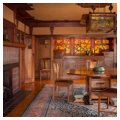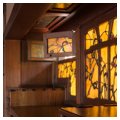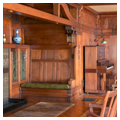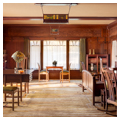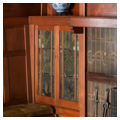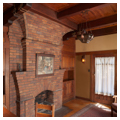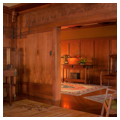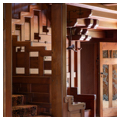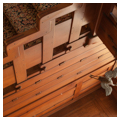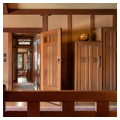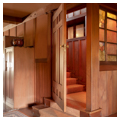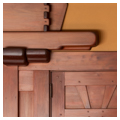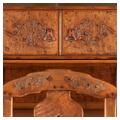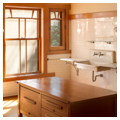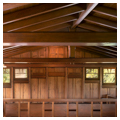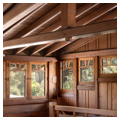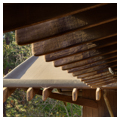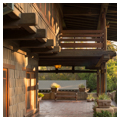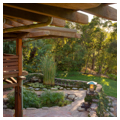An icon of the American Arts and Crafts movement, the Gamble House remains as the most original and complete expression of architects Charles and Henry Greene. Together with a cadre of talented craftsmen, they left a noteworthy, if not vast, footprint on the early-twentieth-century architectural scene in the United States. Published internationally by 1903, their finest and most characteristic work began to emerge by 1906. By World War I, their work had fallen from favor. Designed in 1908 at the apex of the Greene brothers’ career, the Gamble House was built for David B. Gamble, of the Procter and Gamble Company based in Cincinnati, and his wife, Mary Huggins Gamble. It was Mary who worked most closely with Charles, the elder brother in the Greene and Greene firm, who claimed credit as principal designer of the building and its furnishings. A uniquely Californian gesamtkunstwerk, the house is sometimes regarded as “Craftsman,” but it more precisely belongs to a unique idiom peculiar to the Greenes that melds Gustav Stickley’s “structural style” with a sensuous method of finishing materials and respectful references to Japanese and Chinese design precedents. The houses of Greene and Greene, not least the Gamble House, make manifest that execution is equal in importance to design. With its exquisite detailing, the Gamble House belongs to a class of artistic dwellings, and its human proportions and natural materials convey the essential character of the Gamble family, known for quiet philanthropy and self-effacing Presbyterian values. It is significant that the house stands among more modest craftsman cousins, apart from Pasadena’s “Millionaire’s Row.”
Low-pitched roofs, deep terraces, and titanic, unscreened sleeping porches dominate the exterior of the house. The street view is especially striking for the monumentally deep eaves that shelter the northeast porch, which visually expands the boundaries and overall form of the house well beyond the confines of its shingled walls. In the early years of the twentieth century, sleeping porches were popular and national periodicals promoted them to health seekers and the culturally alert, many of whom came to Pasadena for the winter season. Nowhere did these porches proclaim more boldly the promise of outdoor life than in the Gambles’ winter residence. Using Douglas fir posts and beams, redwood split shakes, local river stones, clinker brinks, and a creeping fig vine that literally and figuratively roots the house to its site, the Greenes skillfully choreographed a seamless integration of house and landscape. This integration reflects the topography, climate, and the relaxed, outdoor orientation of the southern California lifestyle. Pasadena’s lure among culturally minded and wealthy Midwesterners, combined with a building boom in the early twentieth century, made the city a viable, if short-lived, market for the Greenes’ costly work. The oft-published houses of Greene and Greene inspired builders of more modest dwellings, and the brothers’ work would soon be conflated in the popular imagination with more modest craftsman bungalows.
The interior of the Gamble House is paneled lavishly in exotic hardwoods—Burmese teak in the entry hall and living room and Honduras mahogany in the dining room. Built-in cabinetry and myriad other features betray meticulous attention to detail, both functional and aesthetic, with due appreciation for and a deep understanding of materials and their appropriate uses. Studying together, the Greenes had three years of polytechnic instruction at the Manual Training School of Washington University in St. Louis prior to their formal architectural training at MIT from 1888 to 1891. They apprenticed separately with protégés of H. H. Richardson in Boston before heading out to California to visit their parents in 1893. En route to Pasadena (even then a hermetic suburb of Los Angeles), the Greenes spent three days in Chicago at the World’s Columbian Exposition where the Japanese Ho-o-den—a pavilion of characteristic temple forms constructed on-site by Japanese craftsmen—may have caught their attention. Once they arrived in Pasadena, the brothers decided to remain.
“Architecture as a Fine Art,” was Charles Greene’s mantra (he wrote an article of this title in 1917), and his vision of marrying exquisite craft with beautiful and useful designs became central to the Greenes’ reputation, for better or worse. In the Gamble House, the two brothers could explore the full possibilities of this vision for clients who appreciated and could afford it. That their work was no longer in demand by 1915 is as much due to changing fashions (including the rise of interior decorators), as it was to the wartime economy and the high cost of materials and labor. Charles moved with his family to Carmel-by-the-Sea in 1916, where he continued some design work, though at a slower pace. Henry nominally carried on the joint practice in Pasadena until 1922, when it was formally dissolved. He continued to work independently until 1935. Critical acclaim for their work did not come again until after World War II, when it was almost too late for the brothers to enjoy it—Henry died in 1954, and Charles followed in 1957. In a 1950 issue of House Beautiful, Elizabeth Gordon and Jean Murray Bangs resurrected the Greenes’ work as a vital link between the decorative excesses of Victorianism and the clean expressions of American Modernism. In a 1952 Special Citation, the American Institute of Architects heralded the Greenes as “sensitive and knowing builders who reflected with grace and craftsmanship emerging values in modern living in the western states, formulators of a new and native architecture.” The Gamble House stands as a snapshot in time to prove the point.
Currently owned by the City of Pasadena and operated by the University of Southern California, the Gamble House is open to the public for tours.
References
Bosley, Edward R. Gamble House. London: Phaidon Press, 1992.
Bosley, Edward R. Greene & Greene. London: Phaidon Press, 2000.
Bosley, Edward R. (ed.), Anne E. Mallek, Ann Scheid and Robert W. Winter. The Gamble House: Building Paradise in California. Chicago: CityFiles Press and University of Southern California, 2015.
Bosley Edward R., and Anne E. Mallek, eds. A ‘New and Native’ Beauty: The Art and Craft of Greene & Greene. London: Merrell Publishers, 2008.
Current, William R. and Karen. Greene & Greene: Architects in the Residential Style. Fort Worth, TX: Amon Carter Museum of Western Art, 1974.
Ford, Edward R. The Details of Modern Architecture. Cambridge, MA and London: MIT Press, 1990.
Greene, C. S. “Architecture as a Fine Art.” The Architect 13, no. 4 (1917): 217-222.
Jordy, William H. “Craftsmanship as Structural Elaboration: Charles and Henry Greene’s Gamble House.” In American Buildings and Their Architects, vol. 4, Progressive and Academic Ideals at the Turn of the Twentieth Century. New York: Oxford University Press, 1972.
Makinson, Randell L. Greene & Greene: Architecture as a Fine Art. Santa Barbara and Salt Lake City: Peregrine Smith, 1974.
McCoy, Esther, with Randell L. Makinson. Five California Architects. New York: Reinhold Publishing Corporation, 1960.




















